Distinguished Critique: Batman: Birth of the Demon Review
A taut trilogy of tales, these graphic novels centered on Ra's al Ghul work almost as well alone, if not better, than they do together
—by Nathan on August 6, 2024—
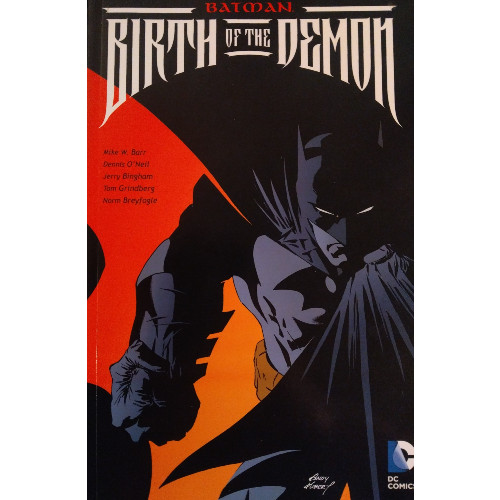
In 1971, Dennis O'Neil, Bob Brown, and Dick Giordano introduced Batman (and the comics reading world) to a nefarious eco-terrorist who just wanted to watch the world burn…and then grow back to its illustrious self prior to being scavenged by human hands. Ra's al Ghul, the Demon's Head, was an insanely intelligent, ridiculously long-lived villain with a scheme unlike anything seen in a Batman comic at the time of his debut. He hadn't been driven deranged by falling into a vat of chemicals that bleached his face. He wasn't obsessed with crimes dealing with the number two. He wanted to wipe out humanity so his beloved earth could be restored to its pristine past.
And Batman, with his "No killing" rule, just kept getting in his way. What a bore.
Batman and Ra's had squared off multiple times in past narratives, existing in a bizarre relationship where both men were sworn enemies who surprisingly respected each other. "The Detective," Ra's has been known to refer to Bruce as a sign of respect. The man has even requested Batman as his son-in-law, marrying into his criminal empire by way of his daughter Talia, who became smitten with the Dark Knight basically upon meeting him. Maybe it's that horribly tragic backstory with the dead parents or something.
Speaking of dead parents, Talia's daddy dearest has been known to bite the big one, or come close. But thanks to his remarkable Lazarus Pits, Ra's al Ghul rises, again and again, to menace the Earth once more. He'd stave off death again in this series of graphic novels, collected as Batman: The Birth of the Demon, a tour de force of late 80s/early 90s enmity between the Detective and the Demon's Head. I recently slipped back into Batman's pre-Crisis history, and now, I wanted to jump back to the other side of the divide to tackle this trilogy of torment.
Batman: The Birth of the Demon
Writers: Mike Barr, Dennis O’Neil
Pencilers: Jerry Bingham, Tom Grindberg, Norm Breyfogle
Inkers: Jerry Bingham, Tom Grindberg, Norm Breyfogle
Colorists: Jerry Bingham, Eva Grindberg, Norm Breyfogle
Letterers: John Costanza, Gaspar Saladino, Ken Bruzenak
Issues: Batman: Son of the Demon, Batman: Bride of the Demon, and Batman: Birth of the Demon graphic novels
Publication Dates: December 1987, October 1990, January 1993
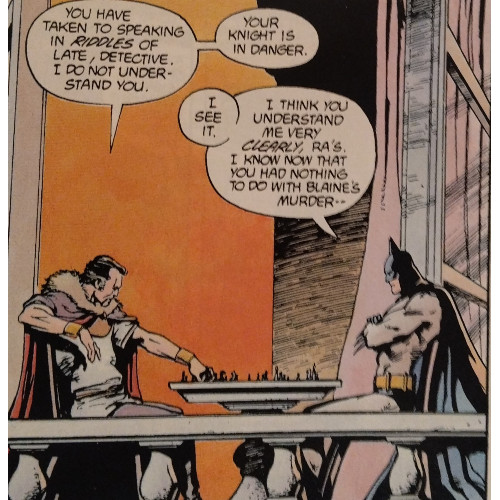
Parenthood is, surprisingly, a prescient theme found throughout these graphic novels.
Ra's al Ghul is a terrorist first, father second, but his love for his daughter Talia often outstrips his aims; likewise, Talia's dedication to her father's purposes puts her in conflict with the one man she so desperately loves. And there's our vigilante, caught in the crosshairs, torn between his own emotions and the instinctual belief in justice which overrides all other sensibilities…if only he lets it.
Mike Barr is the architect of our first two graphic novels, and despite some of my qualms with another contribution of his to the Batman mythos, I headed into these with a hopeful perspective. Despite my problems with "Batman: Year Two," I found myself more enthralled than angered by Barr's Camelot 3000 maxiseries and so hoped to find some of the magic which made his sci-fi Arthurian adventure so exhilarating. And it's there, to an extent.
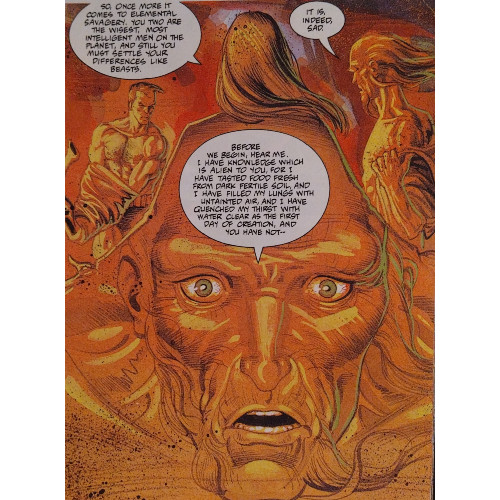
My biggest gripe with Barr is how awkwardly he constructs his version of Batman, and not so much the concepts behind his portrayal, but how that portrayal plays out. In "Year Two," he gave Batman a gun, not to offer a deep dive into the psyche of a gun-toting Batman, but because he expected the shocking image of Batman wielding a piece (remember the "No killing" bit?) to carry his narrative, leaving all the potentially unique character analysis which comes from such a premise scattered on the ocean floor. Likewise, there are truly odd moments presented in these novels juxtaposed against some surprisingly insightful images. We get a Batman who watches a criminal's face melt when sprayed with acid, roughly makes demands of medical staff, and needs to prove himself the bigger man against Ra's thugs somewhat balanced with a Batman who also tenderly learn to love Talia and become genuinely excited over the prospect of them having a child.
"Batman as dad" ("Dadman"? "Batdad"?) plays out uniquely, not that (spoiler!) we ever witness the birth of a child…but the possibility of a son and what that creates in Bruce, especially in the first graphic novel, develops some genuinely heartfelt moments. This is a Batman who, ensconced in the headquarters of one of his greatest enemies who he has developed a very tenuous truce with based on their shared love of one woman, finds happiness, something he has lacked for so long. The orphan planning to become a father is given momentary respite from the sour broodiness which he finds himself dwelling in nearly constantly. Yes, he's still driven and will absolutely knock a few heads around when such violence is called for, but for several pages, our Batman is given a new purpose than avenging his own parents. Just as Barr toyed with the image of a potentially murderous Batman wielding a gun, so too he creates a "What If-?" of sorts in Son of the Demon: "What if Bruce Wayne could be happy?" And even as you know it's fleeting, you can't help by allow some of that temporary joy to resonate…and ache as you wonder what it would be for Bruce to be this way all the time.
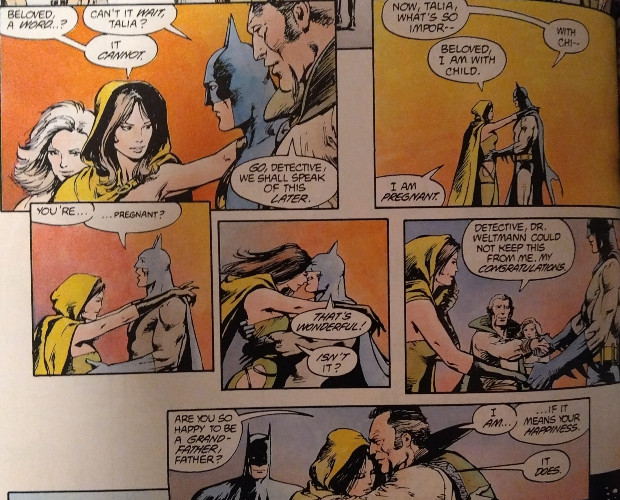
And he's not the only "parent" here. Moms and dads pop up all over across these graphic novels, displaying loyalty to their families as driving forces behind their actions. One father sacrifices his life to save his son; one son rages against the murderer of his father; one son murders someone's mother over the death of his own parents; one son spares the life of and later rescues a man because he saved his mother; one father allows his son to wreck great pain on others, all for the sake of the son's happiness. Barr and O'Neil each toy with the power of parent/child relationships in unique ways, allowing some to be blinded by their love and others to be sidelined by hate.
Ra's al Ghul, as the primary antagonist/surprise protagonist at the center of these narratives, drives the primary plots, coming across as a wonderfully complicated character. Barr threads him across a thin line, as a man obsessed with a singular goal, for some fairly solid reasons, yet whose methods are deplorable and worthy of condemnation. He's the hero of his own story (much like a certain Mad Titan from DC's frenemies over at Marvel), which we see played out in O'Neil's Birth of the Demon. It's fitting the co-creator of the character is given the chance, over twenty years after introducing the Demon's Head, to detail Ra's origin. Ra's brilliance is balanced with a kind of madness, his primary mission derived from a painful past which strips away his care for a world infected by cruelty.
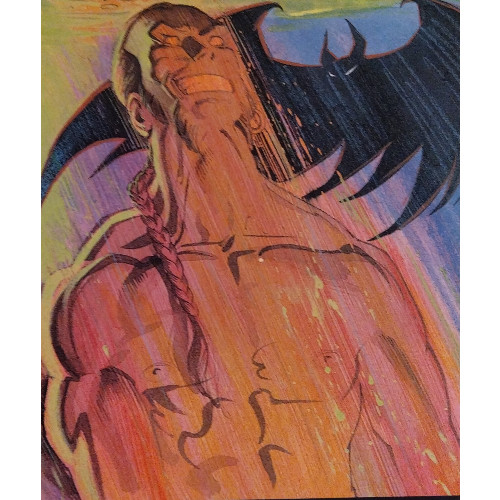
He's presented as a foil for Batman, much in the same way J.M. DeMatteis constructed Kraven the Hunter in "Kraven's Last Hunt" as a foil for Spider-Man. They're very similar men–brilliant, purposeful, current courses of action formed from past traumas–yet to which ends they expend their energies as dealing with those traumas are quite different. Slotting Birth of the Demon at the volume's end makes sense, chronologically, but it also makes sense narratively…we've seen how Ra's al Ghul operates, we know his plans. To watch those culminate before diving into his past uniquely frames the volume, and on a second read (or a third as I recently did), we see him through a different lens: the plots and plans are the same, they're still heinous, but with them come literal centuries of emotional damage and baggage Ra's is attempting to cope with through globally devastating means.
Talia, too, is presented as complicated, but she's been that way since her inception. Torn between her father's aims and her love for Batman, Talia regularly finds herself playing the role of unwitting victim in these graphic novels. Barr and O'Neil differ somewhat in their projection of her–Barr's Talia palpably feels love for the Dark Knight (at least in the first graphic novel) while constrained by devotion to her father, while O'Neil gives her a limited role and makes her more zealous. Barr's most engaging depiction of her comes in Bride of the Demon, the direct follow-up to Son of the Demon, as she is allowed some time to wrestle with the events of that first chapter. Barr nicely develops both sides of the character, the young woman who feels duty bound to her father yet exercises her agency for her feelings when the need arises.
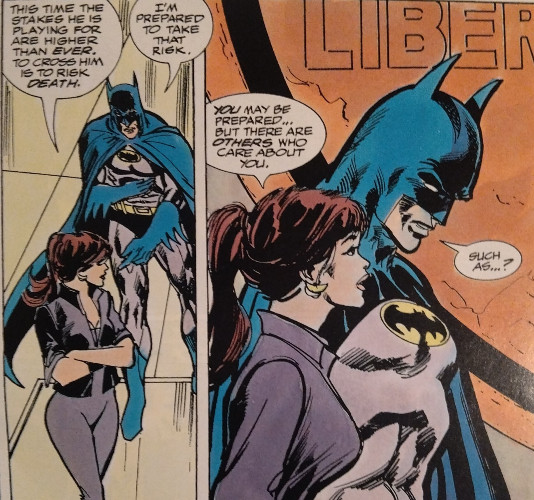
Tonally, there's no denying O'Neil's contribution feels like a major shift from the first two narratives. Barr's stories, both narratively and artistically, fit the scope of the "graphic novel" format as introduced in the 80s, with Bride serving as a "sequel" to Son (the plot of the second is not an immediate continuation of the first, but there are enough references to showcase Barr is continuing narrative threads from Son). Birth takes us back in time, with Batman providing a frame tale through which Ra's history can be told. Norm Breyfogle adopts a painterly style to develop this graphic novel, straying from his typical artistic methods to create a unique look that prides itself on details and stretches the artistic definition of a comic–at a time where Marvel's own line of "Graphic Novels" had been reduced to telling slightly longer one-off narratives rather than grand examinations of the human spirit, these three hew closer to the definition of narratives which feel intentionally impactful and artistically and thematically robust. Because of the tonal shift, I can't quite compare Birth to the other two perfectly–there are some continuity errors between O'Neil's tale and Barr's (such as the fate of Talia's mother)–but it does feel more "adopted" into the other narratives for the sake of transforming these stories into a full "Demon Trilogy." You could more easily market O'Neil's graphic novel as a continuation of his original Ra's al Ghul narratives rather than as an estranged sibling to Barr's stories. Birth stands well on its own, an engaging examination of a villain's past and the formation of his philosophy. Here, it feels awkwardly placed, like the sight of Batman wielding a gun for no other reason than a flashy image.
As individual stories, each of these narratives has merits, whether you enjoy seeing Batman's elation over the thought of becoming a father or the birth of the man who would become known as "the Demon’s Head." Son and Bride work well in unison and can be easily (and probably should be) read back-to-back. I don't know if it was ever suggested Barr write a third graphic novel and create his own trilogy, nor am I aware if Birth was intended from the beginning to be the third installment in this "Demon Trilogy." Does it work perfectly? No. The differences between Barr and O'Neil's writing styles, the focus of their stories, and the art make Birth distinct enough from its predecessors to feel like an outlier. So don't expect the most cohesive representation of Ra's al Ghul if you dive into this volume. Maybe read the first two, soak yourself in a Lazarus Pit for a bit, and come back refreshed for the final chapter.